Trains float my boat. I admit it. When Paul Theroux declared, “I have seldom heard a train go by and not wished I was on it,” I knew exactly how he felt.
Ever since the authorities announced that what used to be the railway department of the Japanese colonial government would be restored and turned into a museum devoted to local railway history, I’ve been looking forward to getting inside this century-old landmark in the heart of Taipei.
The museum, called the Railway Department Park (鐵道部園區), opened to the public in July last year. It’s part of National Taiwan Museum (國立臺灣博物館), but to get inside, you’ll need to buy a separate admission ticket costing NT$100 (or NT$50 for students, senior citizens and those under 12 years old).
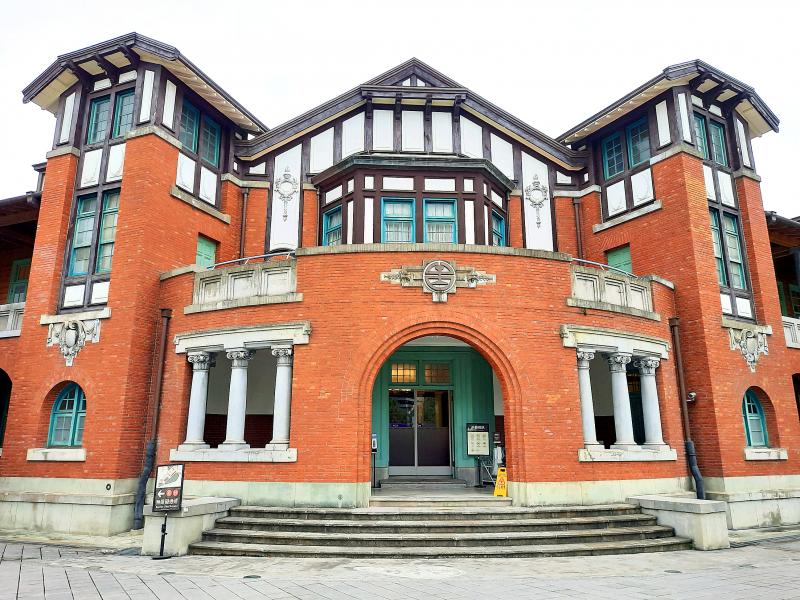
Photo: Steven Crook
If you’ve no interest in rail history — or you don’t have enough time to do the exhibitions justice — consider at least walking past the main building on the intersection of Zhongxiao West Road (忠孝西路) and Yanping North Road (延平北路一段). It’s a beautiful three-floor structure shaped somewhat like a comma.
Designed by Moriyama Matsunosuke, the Japanese architect who created several of Taiwan’s most iconic buildings, it was completed in 1919-1920.
If you face the formal entrance, and concentrate on the second and third floors, you’ll notice Tudor Revival half-timbering. On the second level of both wings, facing the main road, there are colonnaded walkways — presumably so less sunshine would heat up the offices on that floor, and to give those working inside somewhere they could enjoy a few breezes.
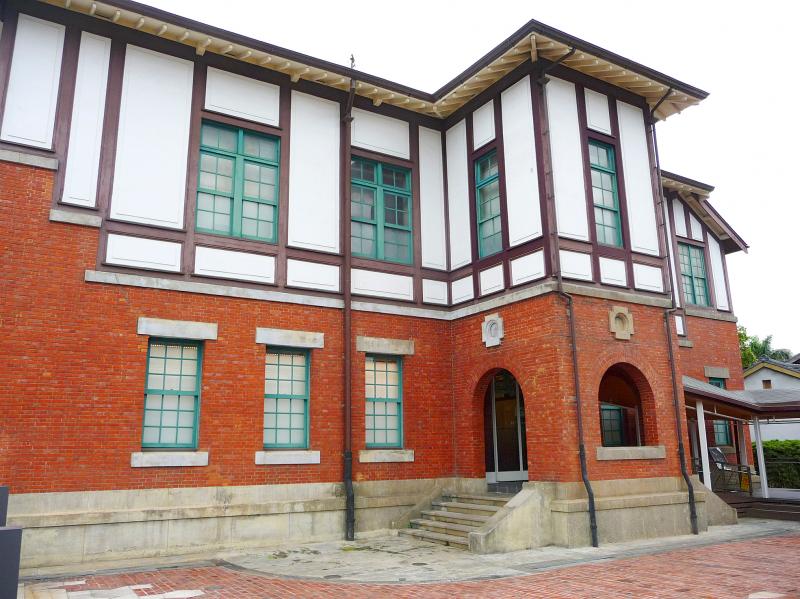
Photo: Steven Crook
Before getting stuck into the various displays, I had a good look around the other buildings in the park. All of them have been carefully restored, and made wheelchair-accessible.
The former canteen is now a souvenir shop. A single-story structure with a most unusual footprint — something like a rhombus merged with a rectangle — is a cafeteria. The concrete tepee, built as an air-raid shelter and command center during World War II, isn’t open to the public.
At the very center of the campus, there’s a smallish concrete building known as the Octagon. (It does indeed have eight sides.) Its appearance calls to mind Taipei’s Museum of Drinking Water (自來水博物館), and its original function also had a strong connection to plumbing. It used to be a toilet.
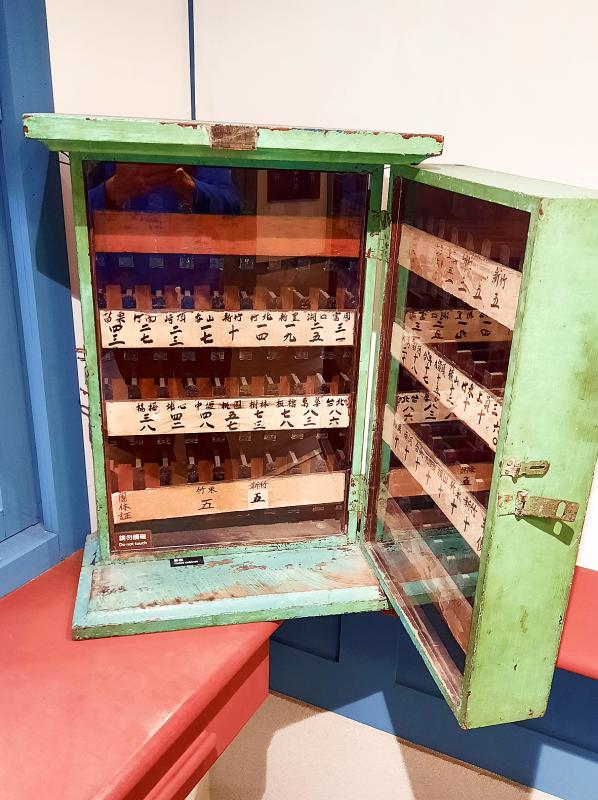
Photo: Steven Crook
The tiled urinals around the central column are now used as display spaces. However, the four stalls on the periphery are sealed, so visitors wondering if 1930s railway employees sat or squatted will leave with their curiosity unsatisfied.
It seems the original layout of the railway department didn’t include a female bathroom. Very possibly, no women worked here.
Studying everything inside the main building (where you’ll find the majority of the museum’s displays) and the two mostly-wood buildings that date from 1934 took me almost two hours — and I learned a lot.
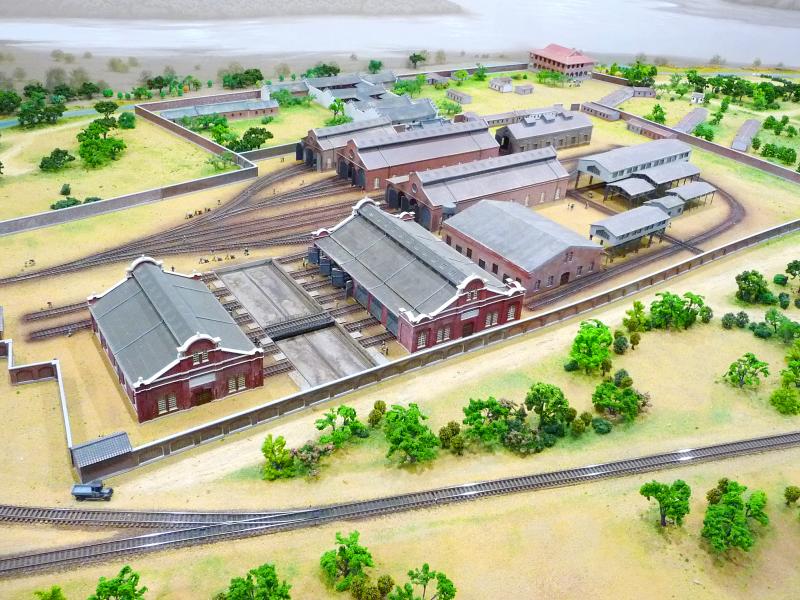
Photo: Steven Crook
I had no idea that, for instance, between 1965 and 1990 there was a 6.2km-long branch line between Banciao (板橋) and Jhonghe (中和).
Nor had I ever noticed the Mandarin Phonetic Symbols (注音符號) that appear on the sides of freight wagons. These indicate the function (such as carrying track ballast, coal, livestock, gasoline or acid) and tonnage of each piece of rolling stock.
What’s more, the museum solved for me the mystery of a 1.18km-long tunnel-type structure in Pingtung County’s Fangshan Township (枋山). Jiahe Shelter (嘉和遮體) is an obvious anomaly. It doesn’t burrow through a mountain. Nor is it close to a landslide-prone slope.
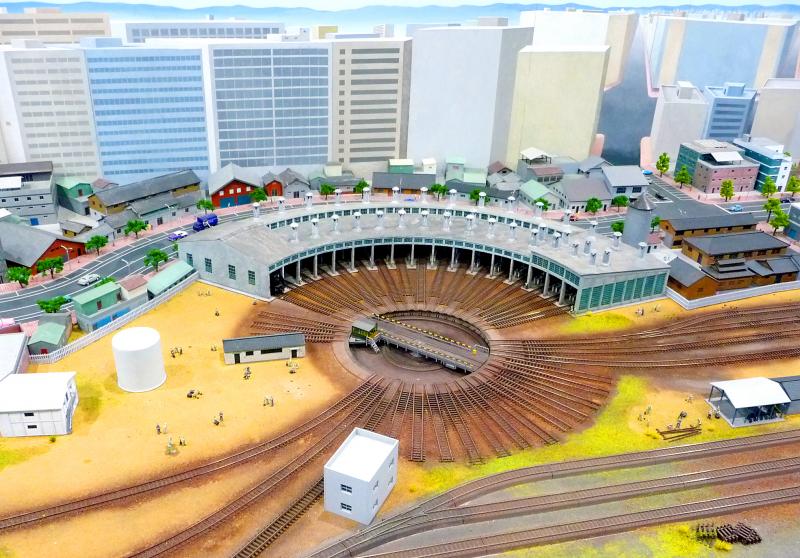
Photo: Steven Crook
The shelter was designed in the 1980s, when the route of the South Link Line (南迴線) connecting Pingtung with Taitung was being finalized. The authorities had it built because there were fears that stray munitions from a nearby shooting range might hit a train. However, by the time it was completed in 1991, the military had decided to conduct their live-fire exercises elsewhere.
My quibbles? A kerosene lamp is displayed next to a text panel about the construction of the Keelung-Hsinchu railroad in the final years of the 19th century — but there’s no indication if the lamp is from the same era, or if it’s a replica.
The mockup colonial-era waiting room doesn’t have a hundredth of the atmosphere of the real thing at Baoan (保安) in Tainan.
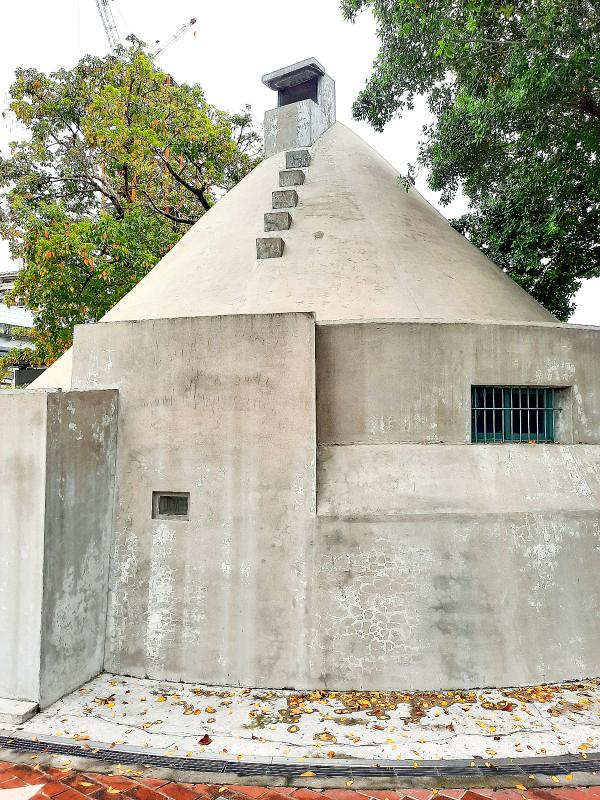
Photo: Steven Crook
Yet the section that details the restoration process is very worthwhile, and I’d happily buy a ticket just to gaze at the two models that depict the area around what’s now the Railway Department Park in different time periods.
One shows the neighborhood as it looked circa 1910, the other as it appeared in the 1970s and 1980s.
If anything, the latter is more engrossing than the former, because it makes very clear just how much Taipei’s downtown has changed in recent decades. The above-ground iteration of the main station is long gone, as are China Mall on Zhonghua Road (中華路) — in its 31 years of existence, this business hub is said to have played a key role in Taipei’s culinary history — and the 17-berth railway roundhouse.
Bridge technology, railway signals, the various types of express trains, and the printing of tickets are explained well. There are also sections about railway bento boxes and the narrow-gauge railroads which served Taiwan’s sugar, logging and mining industries.
Until Aug. 29, the Railway Department Park has a special exhibition on the 1935 Taiwan Exposition, an event that showcased and celebrated 40 years of rapid modernization under Japanese rule.
Another special exhibition focuses on Taiwan first purpose-built railway hotel and runs until June 14. Built in 1908 and destroyed by an air raid in 1945, it stood on the plot now occupied by the Shin Kong Life Tower.
The park and its buildings are open from Tuesday to Sunday, 9:30am to 5pm, and also Mondays that happen to be national holidays. For background information in Chinese and English, visit National Taiwan Museum’s Web site: www.ntm.gov.tw.
Steven Crook has been writing about travel, culture and business in Taiwan since 1996. He is the author of Taiwan: The Bradt Travel Guide and co-author of A Culinary History of Taipei: Beyond Pork and Ponlai.

Oct. 27 to Nov. 2 Over a breakfast of soymilk and fried dough costing less than NT$400, seven officials and engineers agreed on a NT$400 million plan — unaware that it would mark the beginning of Taiwan’s semiconductor empire. It was a cold February morning in 1974. Gathered at the unassuming shop were Economics minister Sun Yun-hsuan (孫運璿), director-general of Transportation and Communications Kao Yu-shu (高玉樹), Industrial Technology Research Institute (ITRI) president Wang Chao-chen (王兆振), Telecommunications Laboratories director Kang Pao-huang (康寶煌), Executive Yuan secretary-general Fei Hua (費驊), director-general of Telecommunications Fang Hsien-chi (方賢齊) and Radio Corporation of America (RCA) Laboratories director Pan
The consensus on the Chinese Nationalist Party (KMT) chair race is that Cheng Li-wun (鄭麗文) ran a populist, ideological back-to-basics campaign and soundly defeated former Taipei mayor Hau Lung-bin (郝龍斌), the candidate backed by the big institutional players. Cheng tapped into a wave of popular enthusiasm within the KMT, while the institutional players’ get-out-the-vote abilities fell flat, suggesting their power has weakened significantly. Yet, a closer look at the race paints a more complicated picture, raising questions about some analysts’ conclusions, including my own. TURNOUT Here is a surprising statistic: Turnout was 130,678, or 39.46 percent of the 331,145 eligible party

The classic warmth of a good old-fashioned izakaya beckons you in, all cozy nooks and dark wood finishes, as tables order a third round and waiters sling tapas-sized bites and assorted — sometimes unidentifiable — skewered meats. But there’s a romantic hush about this Ximending (西門町) hotspot, with cocktails savored, plating elegant and never rushed and daters and diners lit by candlelight and chandelier. Each chair is mismatched and the assorted tables appear to be the fanciest picks from a nearby flea market. A naked sewing mannequin stands in a dimly lit corner, adorned with antique mirrors and draped foliage

The election of Cheng Li-wun (鄭麗文) as chair of the Chinese Nationalist Party (KMT) marked a triumphant return of pride in the “Chinese” in the party name. Cheng wants Taiwanese to be proud to call themselves Chinese again. The unambiguous winner was a return to the KMT ideology that formed in the early 2000s under then chairman Lien Chan (連戰) and president Ma Ying-jeou (馬英九) put into practice as far as he could, until ultimately thwarted by hundreds of thousands of protestors thronging the streets in what became known as the Sunflower movement in 2014. Cheng is an unambiguous Chinese ethnonationalist,